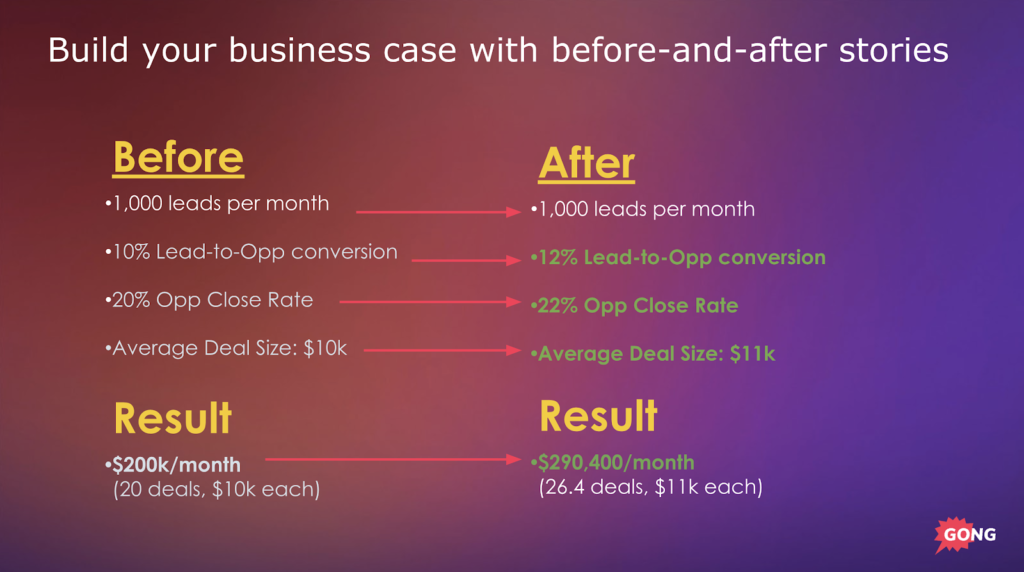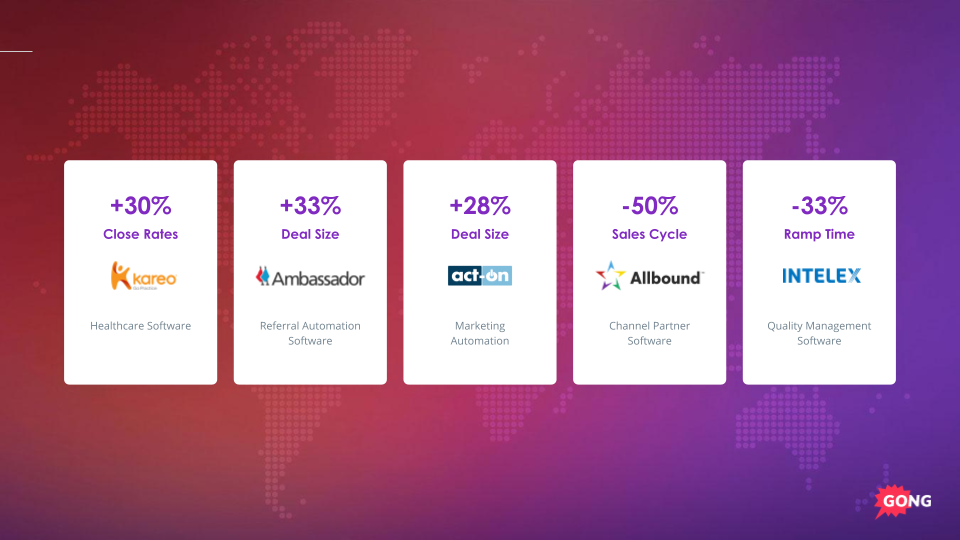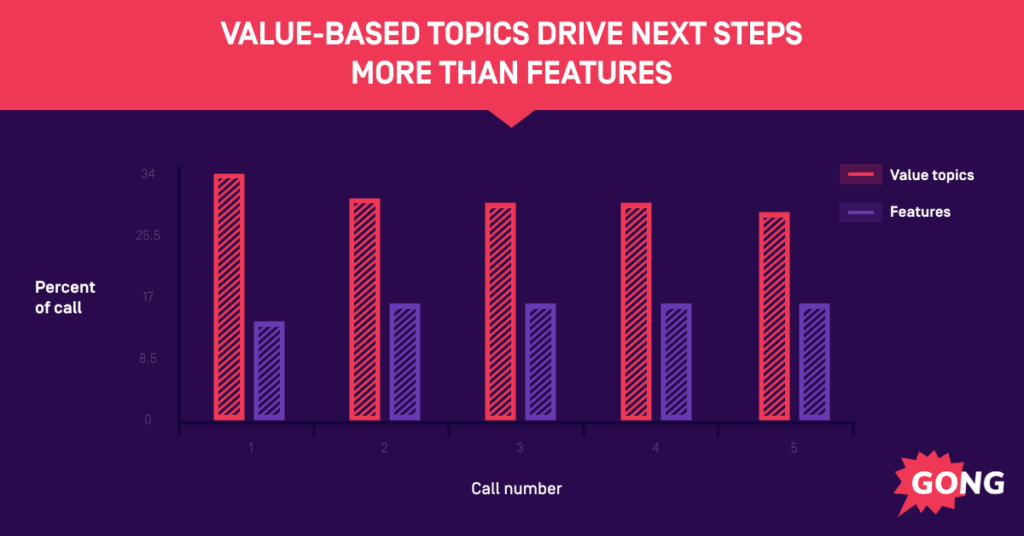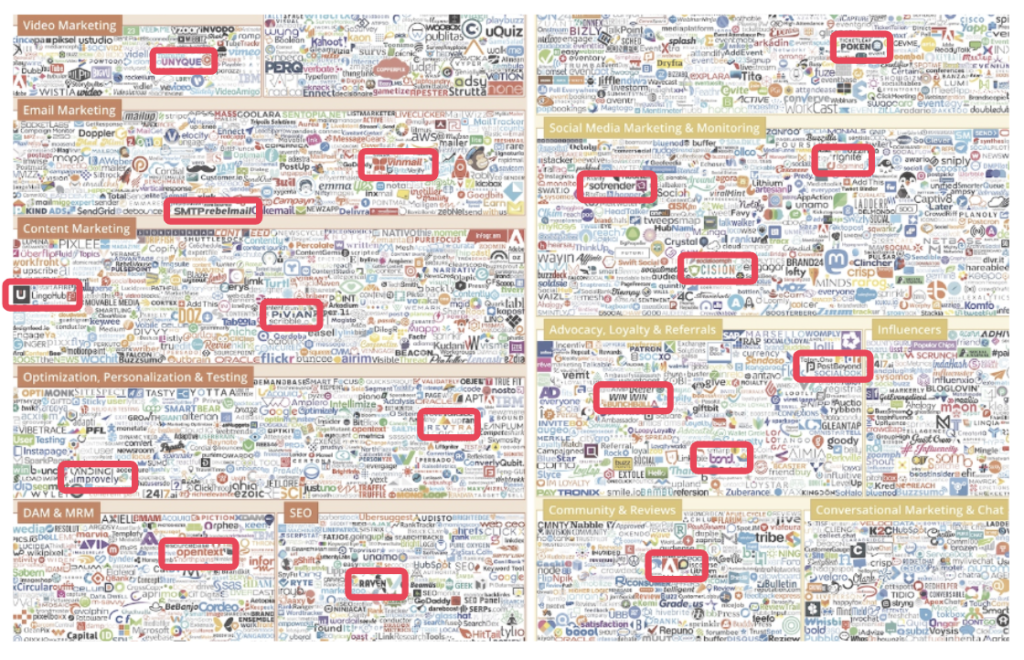Sales pitch examples: 5 elements that help you win
“Winning isn’t everything; it’s the only thing.”
That famous quote is (maybe incorrectly?) attributed to Vince Lombardi.
No matter who said it, it’s spot on, especially for those of us in the sales world. Winning in sales is kinda sorta VERY important. If you are not winning (closing deals, for example) in sales, your sales career will be short-lived.
And if you want to win more, you need a sales pitch that helps accelerate your winning.
There are 5 elements of a winning sales pitch:
- The Nexus
- The Problem
- The Story
- The Value Proposition
- The Evidence
This article will introduce — and then detail — each of the 5 elements complete with real-life examples of how each one has been successfully implemented.
Sales Pitch Element #1: The Nexus
Nexus: “a connection or series of connections linking two or more things” (Oxford Languages).
In sales-speak, the nexus is a polarizing insight that changes how your customer thinks and feels about a key problem or opportunity and can eventually be tied back to your solution.
Note: The last part is the “connection linking two or more things.”
So what exactly is a “polarizing insight?”
It’s the before and after — the change.
Your job as a salesperson is to show a change in the world that is bigger than your company AND THEN frame what your solution offers as “the inevitable.” You want to create a sense of FOMO — “Wow, this is the way the world is moving. We are missing out before we get left behind. We need to get onboard ASAP!”
For most sellers, the competition is the status quo. Starting with a nexus allows you to tackle the “way we’ve always done things” head on.
A few examples:
Sales pitch example #1: The way we do [X] has changed. Think about [example] – the way we do it has moved from [evidence of undeniable change in the world].
Sales pitch example #2: I talk to [Job title] every day, and they’re often surprised to hear that [polarizing insight]. That means [stakes]. << this is one we often use at Gong.
Sales pitch example #3: Zuora

This slide is brilliant. Short and sweet and absolutely NAILS the nexus.
Zuora presents an undeniable change in the buyer’s world, one that is certainly not dependent on their product BUT one their product solves in a significant way.
Bonus: The focus is on the buyer.
Once you lay the groundwork (the nexus), it’s time to present the next part: The Problem.
Sales Pitch Element #2: The Problem
Problem: “a matter or situation regarded as unwelcome or harmful and needing to be dealt with and overcome” (Oxford Languages).
Okay. Sorry. That definition was quite obvious. My bad.
In #SalesSpeak, “The Problem” is that one thing (or many things) that is impeding your buyers from reaching their goal(s).
Your job: Describe your prospect’s problem better than they can describe it themselves. This forces them to “lean in” … to listen with full intention. You want your buyer to be nodding yes as you are presenting the problem.
If you can get them to nod along (to agree) with the problem as you present it, they will automagically assume your solution is the one that can fix the issue — the best option..
Sales pitch example: Drift — a conversational sales and marketing platform — nails “The Problem” in a series of 3 direct, to-the-point slides:

Drift takes the words of its customers and frames them as the problem.
Email isn’t real-time.
Email gets abused.
Email is not smart.
By pointing out fundamental flaws (of email, in this case), Drift successfully tees up the conversation about how its solution can overcome the many limitations of email … in a way that is grounded in problems they know, understand, and are trying to solve.
Another great sales pitch example: In Season 4, Episode 7 of Shark Tank, Adam “Scrub Daddy” Krause frames the problem in terms the end-user can clearly understand. Each feature he describes is explained as to why it matters for the customer.
Take the “easy to clean” feature: The problem with some sponges is they are tough to clean. Krause shows how easy it is to clean a dirty “Scrub Daddy” with just a quick rinse in warm water.
The Nexus. The Problem. Now … The Story.
Sales Pitch Element #3: The Story
Everyone loves a good story.
Sales stories help to sell your solution.
Now that you’ve presented the nexus and outlined the problem, your buyer is ready to accept a new idea — YOURS. The story is where you show them how they win.
The key is to tell a before and after customer story.
Doing so helps to neutralize your buyer’s logical brain and fire up their emotional brain.
As you share the story, be sure to talk numbers (ROI), but don’t let it be your primary focus. Instead, provide your buyer just enough numbers to rationalize their emotions.
Remember: Humans buy on emotion and justify with logic.
Salespeople are generally good storytellers. But the best of the best sales reps don’t just share the results; they also tee up the “win” with the before — where the customer started the journey.
Without the “before,” the “after” has no context and falls flat. For example:

Notice how we present numbers (and arguably, ROI) on the actual slide. However, what you don’t see from the slide is the actual story we are telling, the conversation we are having with our buyers.
The slide is a backdrop for a conversation. The conversation itself focuses on the story, complete with emotional highs and lows.
Here is another example of a “backdrop” slide we use at Gong:

This story is not really about ROI … though it does have concrete numbers and data.
When we share this slide, we use it (again) as a backdrop to focus on the before and after story.
Want more slides that sell? Try our FREE sales deck template.
One more story — from one of the best storytellers, Mr. Don Draper. In this clip, Mr. Draper states, “Well, technology is a glittering lure. But there’s the rare occasion when the public can be engaged on a level beyond flash if they have a sentimental bond with the product.”
And then he tells — and SHOWS — his story.
If this “carousel” doesn’t tug on your emotions …
Sales Pitch Element #4: The Value Proposition
As sales reps, we are all seeking that sometimes elusive “next call.”
If you want the next call to happen (or at least give it a better chance of happening), focus less on features and more on value.
The stats confirm this:

When sellers focus on features, they are significantly less likely to earn a follow-up call.
Your value proposition is your “in-a-nutshell” version of what you do, who you do it for, and how you do it.
If you want to solve your customers’ pain and address their problems, you must understand their most pressing worries and needs and show them exactly how your product addresses their concerns.
Your solution must bring them tangible value.
Case in point: The original Apple iPod.
Apple wasn’t the first to create an mp3 player, but they quickly became the most successful. Apple didn’t get bogged down in feature comparisons (storage, display size, connectivity with other devices); instead, its messaging focused on VALUE — what the iPod allows you to do — music on the go!
This now-iconic 2012 Dollar Shave Club ad also leans in heavy on value, 3 things specifically:
- Why it’s different: High-quality razors, sent right to your door for a dollar — stainless steel, lubricant, pivoting head. Check. Check. And check. Oh, and the “blades are f***ing great.”
- Why cheaper is better: Who wants to spend $20/month on “brand name razors?” Answer: Nobody. Also, who needs a vibrating handle or a flashlight? Answer: Nobody.
- What the advantages are: No need to buy “shavetech you don’t need” and forgetting to buy your blades every month. Dollar Shave Club has you covered.
Nailed it.
P.S. Unilever acquired Dollar Shave Club for $1 billion in cash in 2016. ONE BILLION. CASH.
Sales Pitch Element #5: The Evidence
The Evidence.
Evidence comes in all shapes and sizes: a customer story, a list of logos in a similar industry, a recent study.
Sales pitch example #1: [Customer] was doing [X]. But, by changing and doing [solution], [Customer] was able to [Intermediary goal], which led to [desired outcome].
Sales pitch example #2: Imagine being able to [Desired outcome]. It’s hard because of [Common objection], right? [Customer] used [solution] to [address objection] and achieve [Positive result].
You can also provide evidence by literally providing actual AUDIO quotes from real customers.
Real (Gong) customers.
Real (Gong) demos.
Real (Gong-recorded) customer reactions.
Here’s a sales pitch example of how a top rep shows evidence (Spoiler Alert: It’s not sharing a Nascar Slide with 100+ logos on it):

And the talk track that goes with it:
“These are all the companies in your space. We work with 17 of them: Up from 4 just two years ago.”
Instead of simply listing companies in your buyer’s industry that are current clients, share their results! That’s value.
Share the momentum behind your business to create a sense of urgency. “Get on the train before you miss out.”
Note: ROI is not considered evidence for buyers and often raises more questions than it answers (How were these calculations made? Are these numbers up to date? What other factors could have impacted these stats?)
It’s time to start pitching.
Batter up. It’s time to pitch!
We created a 5-point template that simplifies all of the above sales pitch examples into an editable winning sales pitch guide — complete with scripts you can weave into your emails, calls, and sales presentations.
Grab the High-Impact Sales Pitch template now and learn how top sellers frame their offering for maximum persuasive impact and supernatural win rates.
